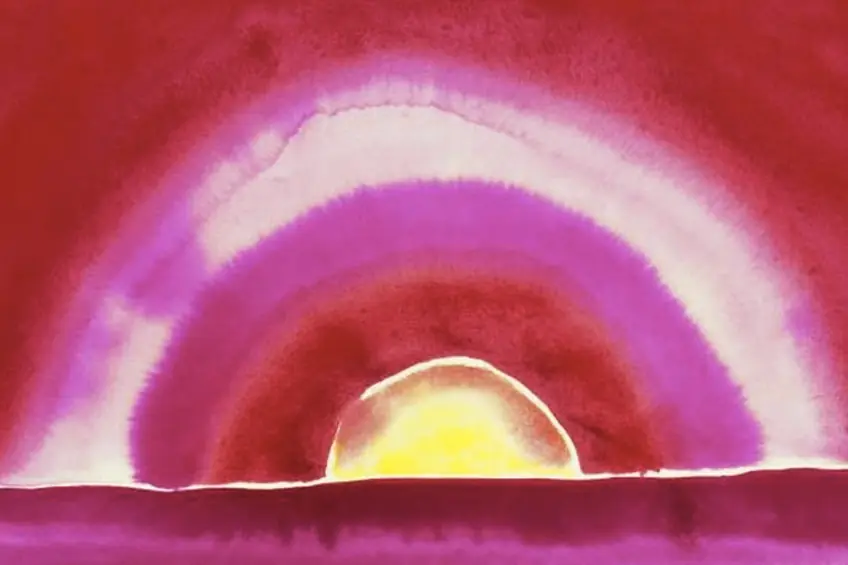Watercolor Artists – A Look at 15 of the Top Watercolor Painters
Who are the most influential and significant watercolor artists in art history? And what are the most famous watercolor paintings to date? The history of watercolor painting dates back to the beginning of human civilization and art, with the discovery of ochre pigments that were once combined with water and other organic material to create the first “watercolor paints”. In this article, we will introduce you to the top 15 watercolor masters of all time, which includes a few prominent names from Contemporary art history. Read on for more about these timeless watercolor artists!
The Art of Watercolor Painting: A Timeless Medium
Watercolor painting is an art form that dates back to the ancient civilizations of Egypt and China and is today considered to be among the must-know mediums for any artist interested in painting. Mastering the medium is not an easy task, yet the masters of watercolor painting in art history and especially the Renaissance, certainly make it look easy! Watercolor painting first gained popularity in Europe during the Renaissance as a formal art medium that was used primarily when artists created drafts or preparatory paintings for larger frescoes.
The medium’s popularity peaked in the 15th and 16th centuries and has since become one of the most practiced mediums to date.
Renaissance masters of watercolor painting would create small studies and sketches of their work using a variety of compositions to determine their final work. As such, watercolors grew into a specific visual art form of itself where artists began to play with the fluidity of the medium and the relationship between water, pigment, and brushwork to create stunning watercolor paintings. The 18th century also saw an increase in artists adopting the medium to portray scenes from the countryside and natural landscapes to test the boundaries of the medium and experiment with movement.
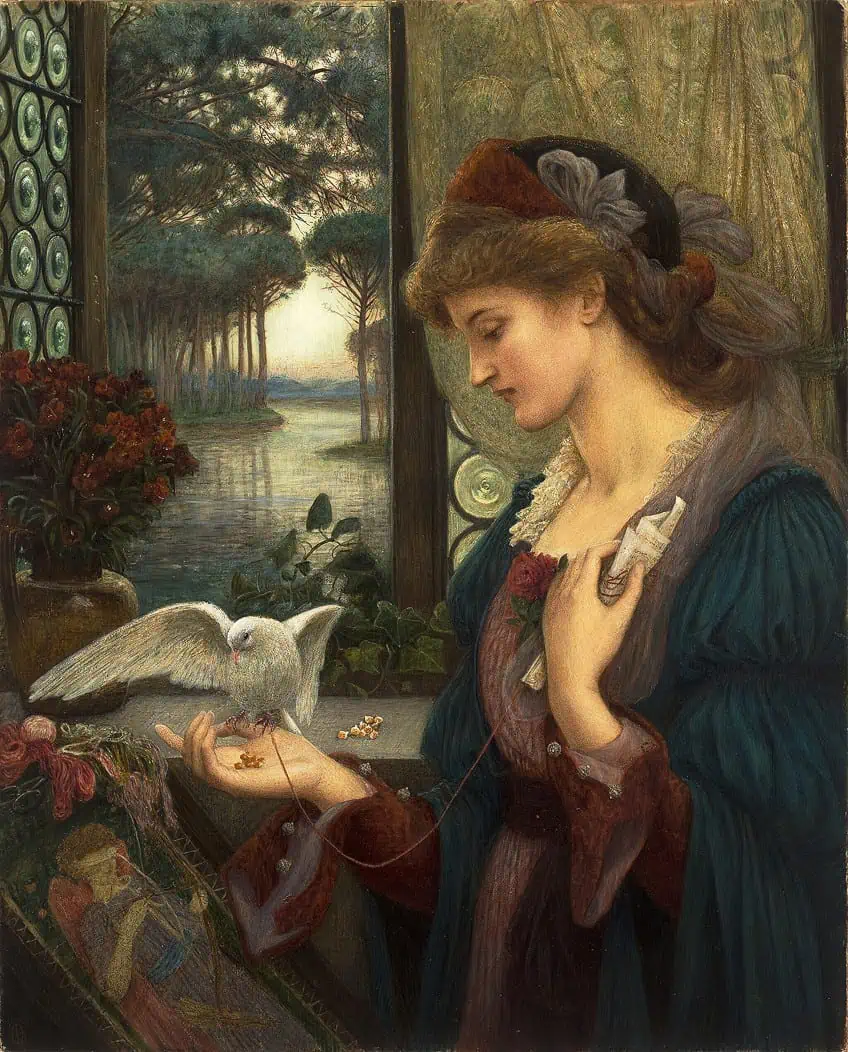
Popular watercolor painting artists such as J. M. W. Turner and William Blake were pivotal figures in popularizing and establishing the use of watercolor as a fine art medium through their brilliant handling of the delicate medium. Contemporary watercolor artists such as Zao Wou-Ki and David Hockney can also be contrasted with the old masters of the Renaissance to illustrate the diversity of the medium in its application and potential for developing new visual languages in art.
It can therefore be said that the art of watercolor painting is indeed timeless!
The 15 Most Famous Watercolor Artists of All Time
Browsing through lists and books of watercolor artists to draw inspiration from can be tiring, but luckily for you, we have compiled the ultimate list of the top 15 best watercolor artists of all time. After scanning art history, these 15 watercolorists have proved to be among the leading ranks of the most influential and significant watercolor painting artists of the past and the present whose works all watercolor artists will appreciate!
Albrecht Dürer (1471 – 1528)
| Name | Albrecht Dürer |
| Date of Birth | 21 May 1471 |
| Date of Death | 6 April 1528 |
| Nationality | German |
| Associated Movements, Themes, and Styles | Northern Renaissance, German Renaissance, and Gothic art |
| Mediums | Watercolor painting, printmaking, engraving, drawing, and oil painting |
| Famous Artworks | ● Landscape with a Woodland Pool (1497) ● Willow Mill (1498) ● Young Hare (1502) ● Great Piece of Turf (1503) ● View of Kalchreuth (1511) |
Albrecht Dürer was among the most famous watercolor artists of the 15th and 16th centuries and was also celebrated as a pioneer in the field of printmaking and drawing. Dürer was a popular artist of the German Renaissance who created many iconic watercolor works, including Young Hare (1502) and many other gentle landscapes that capture the finer details of the natural environment. Together with his talents in draftsmanship, Dürer created numerous highly detailed engravings and prints during his career as well as publication illustrations in the form of woodcut prints and drawings.
His unique style and approach to watercolor painting were unparalleled by any other watercolorist of his time, thus making him one of the most significant watercolor masters of the late 15th century.
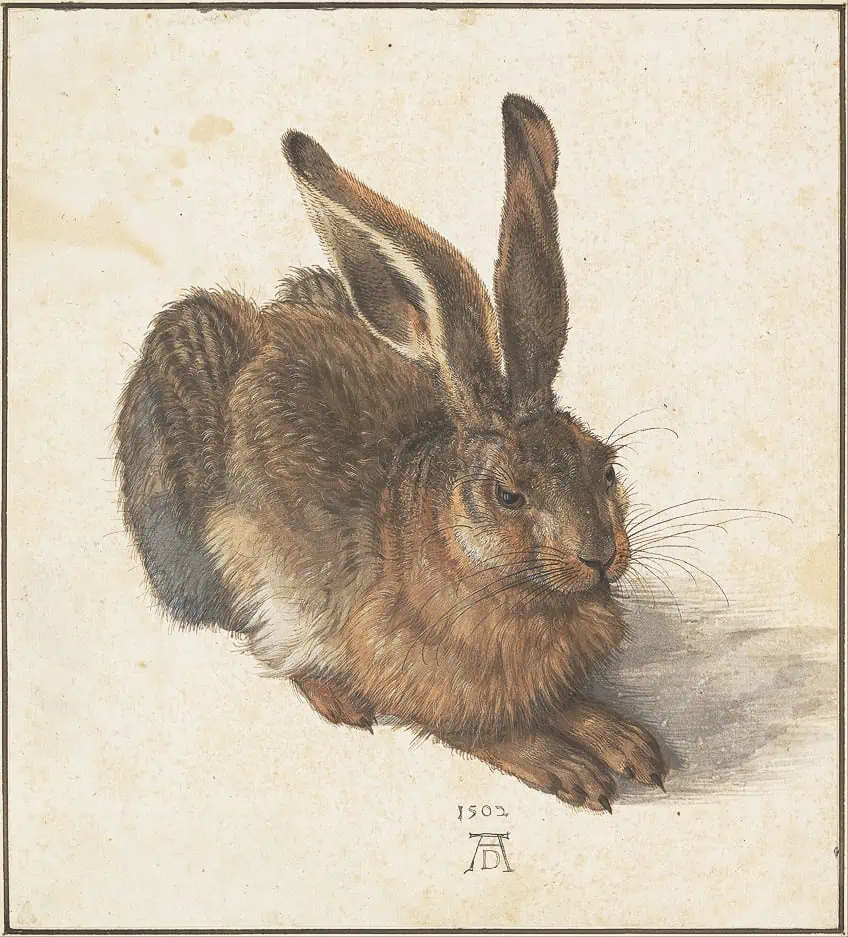
His style was characterized by the use of watercolor to render highly-detailed and textured artworks, which brought his subjects to life. Additionally, his work reflected a sense of realism and was praised for its vibrancy, achieved by multiple layers and glazes of delicate colors over each other to create a sense of depth, realism, and tonal variation.
Paul Sandby (1731 – 1809)
| Name | Paul Sandby |
| Date of Birth | 1731 |
| Date of Death | 7 November 1809 |
| Nationality | English |
| Associated Movements, Themes, and Styles | Landscape painting and portraiture |
| Mediums | Watercolor painting, drawing, oil painting, printmaking, and engraving |
| Famous Artworks | ● Roche Abbey, Yorkshire (c. the 1770s) ● Wenlock Abbey, Shropshire, The South Transept and Converted Prior’s Lodge Seen from the North Transept (1779) ● View of Windsor Castle from the banks of the River Thames (1794) ● Ruins in a Landscape (n.d.) |
Known as “the father of English watercolor painting”, Paul Sandby was perhaps the most influential figure in watercolor art history. Sandby was most famous for becoming one of the co-founders of the Royal Academy, which was established in 1768. The master watercolorist began his career as an artist at the Tower of London under the military drawing unit and thereafter became a draftsman.
While creating preparatory sketches and designs, Sandby began creating watercolor paintings of the natural landscape to document the changes in the development of Scotland following the Jacobite rebellion.
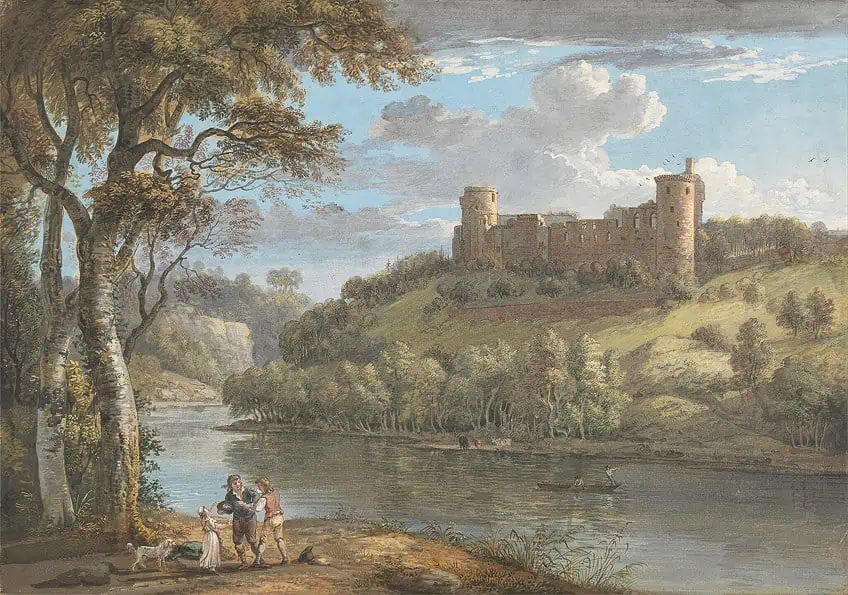
His work received much praise and admiration from other English artists of the time who identified Sandby as a true master of drawing and watercolor, with his special talent for creating images inspired by nature that were true to their reality. By the mid-18th century, Sandby was already exhibiting with the Society of Artists and later went on to lead the Royal Academy alongside 28 other founding members appointed by George III. Most of his watercolor paintings illustrate natural landscapes with features from scenes of his travels across Ireland and Britain.
Thomas Girtin (1775 – 1802)
| Name | Thomas Girtin |
| Date of Birth | 18 February 1775 |
| Date of Death | 9 November 1802 |
| Nationality | English |
| Associated Movements, Themes, and Styles | Romanticism, pastoral, and landscape art |
| Mediums | Watercolor painting and engraving |
| Famous Artworks | ● Jedburgh Abbey from the River (c. 1798 – 1799) ● Pont-y-Pair (c. 1798 – 1799) ● The White House at Chelsea (1800) ● Guisborough Priory, Yorkshire (1801) |
Another pioneer of watercolor painting was Thomas Girtin, who alongside his close friend J. M. W. Turner established watercolor painting as a formal medium in English art during the late 18th century. Born in 1775, Girtin was considered to be one of the most famous watercolor artists of his time whose development of watercolor techniques continues to be studied by watercolor enthusiasts. Although his career was cut short by an early death, his unique style was highly sought after by collectors who admire his landscape paintings.
Among a few of his works were masterpieces such as The White House at Chelsea (1800) and View of Paris from the Pont Neuf (n.d.), the latter of which was celebrated for its lively scene of Parisian society and iconic architecture.

His approach and style when practicing watercolor were expressed by his visual language, which presented dream-like and atmospheric qualities in his paintings. His contribution to watercolor painting was immense and continues to be a major source of inspiration for many Contemporary novice watercolorists.
Joseph Mallord William Turner (1775 – 1851)
| Name | Joseph Mallord William Turner (professionally known as J. M. W. Turner) |
| Date of Birth | 23 April 1775 |
| Date of Death | 19 December 1851 |
| Nationality | English |
| Associated Movements, Themes, and Styles | Romanticism, Maritime paintings, and landscape art |
| Mediums | Watercolor painting, oil painting, and printmaking |
| Famous Artworks | ● The Great Falls of the Reichenbach (1804) ● A Wreck, Possibly Related to ‘Longships Lighthouse, Land’s End’ (c. 1834) ● Beach, English Coast (c. 1835 – 1840) ● The Blue Rigi, Sunrise (1842) |
Joseph Mallord William Turner was among the most famous watercolor artists of the late Renaissance who was celebrated for his expressive, symbolistic, and Romantic approach to maritime and landscape painting. Turner was also an expert oil painter and printmaker whose skill for the detailed rendering of natural elements showed up in many of his famous watercolor masterpieces.
Turbulence and mayhem were key themes in his work that expressed the nature and power of natural elements such as the wind and sea and were best captured in watercolor works such as The Great Falls of the Reichenbach (1804) and The Blue Rigi, Sunrise (1842).
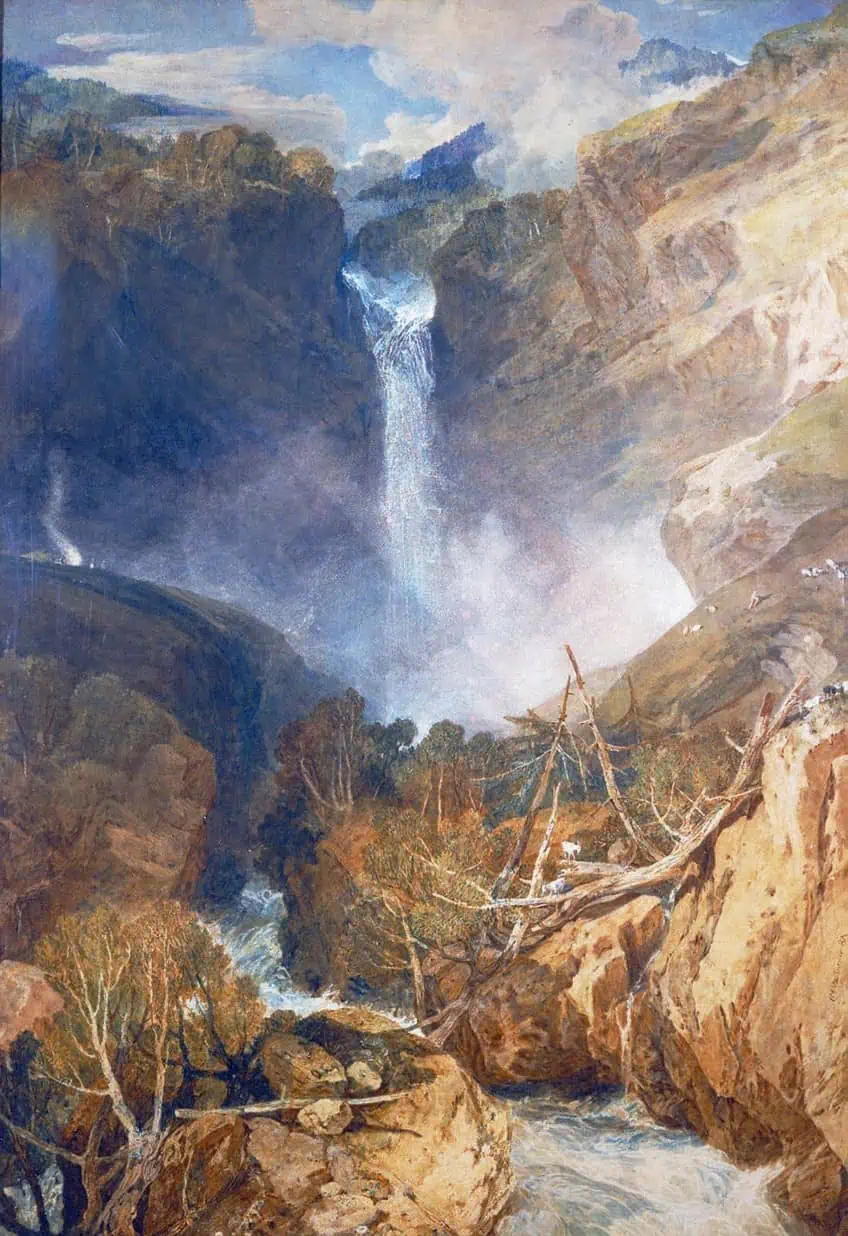
Turner’s ability to capture finer details using watercolor as a primary medium was remarkable, to say the least, and truly demonstrates the artist’s mastery of the medium. Turner was also able to capture the abstract nature of natural elements by using watercolor to portray a dreamy atmosphere in many of his works, which can also be seen in his oil paintings.
John Marin (1870 – 1953)
| Name | John Marin |
| Date of Birth | 23 December 1870 |
| Date of Death | October 1953 |
| Nationality | American |
| Associated Movements, Themes, and Styles | Modern art, American modernism, landscape art, maritime painting, and Abstract art |
| Mediums | Watercolor painting |
| Famous Artworks | ● Brooklyn Bridge (1910) ● New York Fantasy (1912) ● Lower Manhattan (1920) ● Off York Island (1922) ● Mt. Chocorua No. 1 (1926) |
John Marin was one of the most famous Modern watercolor artists of the 20th century whose work in abstract urban landscape painting remains a unique style of the 1920s. Marin’s approach to watercolor painting was also unconventional since he combined the emerging Modernist visuals of 1920s New York with traditional techniques of watercolor painting, which even seeped into his approach to oil painting and reflects his strong preference for the freedom in expression that watercolor offered. Marin’s watercolor landscapes were inspired by the urban terrain and city streets and were often expressed through dynamic compositions, loose brushwork, and a focus on modern abstraction.
Marin went on to inspire many famous Modern artists of the 20th century, including Charles Burchfield and Georgia O’Keeffe among many others.
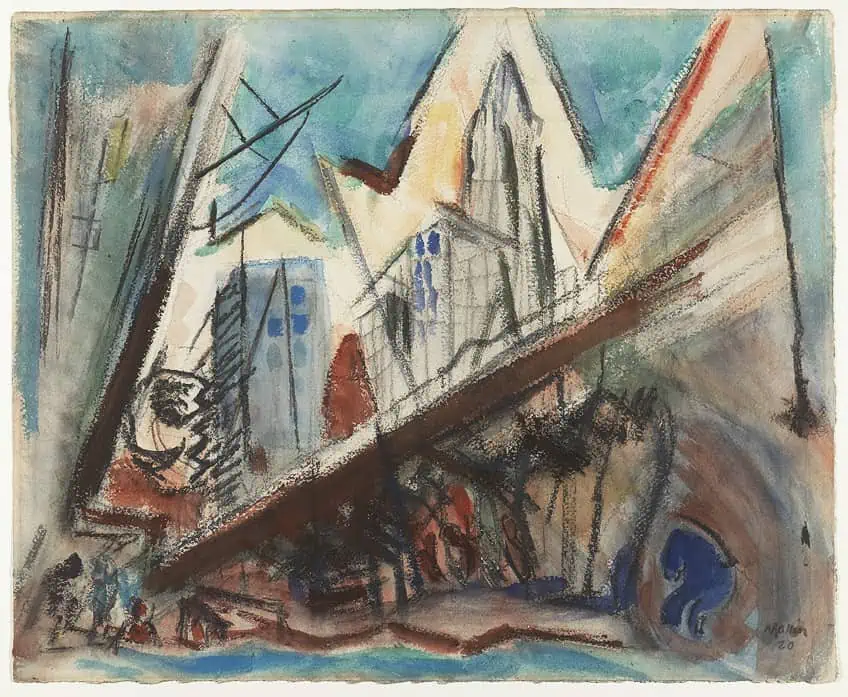
Raoul Dufy (1877 – 1953)
| Name | Raoul Dufy |
| Date of Birth | 3 June 1877 |
| Date of Death | 23 March 1953 |
| Nationality | French |
| Associated Movements, Themes, and Styles | Fauvism, Abstract art, Modern art, Modernism, Impressionism, Cubism, landscape art, social events, and decorative art |
| Mediums | Watercolor painting, design, drawing, oil painting, book illustration, printmaking, and furniture design |
| Famous Artworks | ● The Visit of the English Squadron to Le Havre (1925) ● L’atelier de l’artiste au Havre (1929) ● Léda et le Cygne (1930) ● L’Atelier à Vence (1945) |
Raoul Dufy was a famous Fauvist watercolor painting artist who was also considered to be one of the best modern watercolor artists of his time. Dufy’s watercolor artworks were characterized by their colorful aesthetics and Contemporary compositions featuring bold lines, graphic colors, and scenes of urban and interior landscapes.
His calligraphic approach to line work in his paintings also complements his bold use of color, since Dufy was best known for his experimental approach to watercolor.
The French artist was also a popular designer who studied at the École des Beaux-Arts and École Nationale Supérieure des Beaux-Arts before adopting the principles of Fauvism to suit his personal endeavors. An extensive traveler, Dufy also produced stunning ceramic designs and was applauded for his contribution to architectural decor.
Paul Klee (1879 – 1940)
| Name | Paul Klee |
| Date of Birth | 18 December 1879 |
| Date of Death | 29 June 1940 |
| Nationality | Swiss |
| Associated Movements, Themes, and Styles | Expressionism, Modern art, Cubism, Surrealism, Der Blaue Reiter, Bauhaus style, animal painting, and portraiture |
| Mediums | Watercolor painting, oil painting, drawing, and printmaking |
| Famous Artworks | ● In the Style of Kairouan (1914) ● Southern (Tunisian) Gardens (1919) ● They’re Biting (1920) ● A Young Lady’s Adventure (1922) |
Paul Klee was one of the most influential watercolor artists from the early 20th century who pioneered the use of watercolor in movements and art styles associated with Surrealism, Expressionism, and the Bauhaus style. The Swiss artist was also a major figure in oil painting and printmaking who created many iconic animal paintings with other abstract works inspired by nature, landscapes, music, people, and patterns.
Among Klee’s most famous works include his abstract watercolor paintings that feature geometric shapes, lines, and bright colors combined with his unconventional approach to watercolor painting.
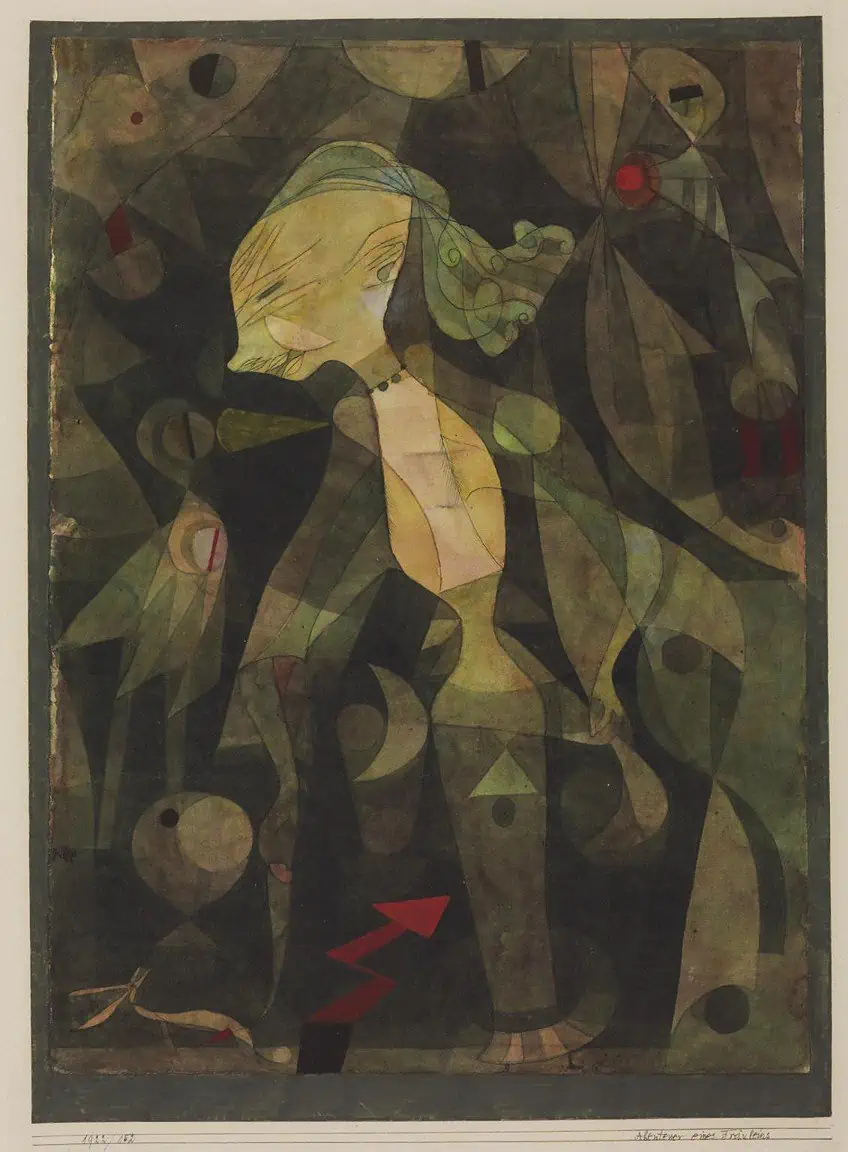
Klee often wet his paper first before applying his paint and also scraped the paint off the paper to add texture to his work. Klee preferred to capture the essence of objects, people, landscapes, and sounds, as opposed to their literal visual representations. His watercolor works also fused muted colors with vibrant hues to add a sense of depth and dynamism to his compositions. As one of the greatest watercolorists of the 20th century, Klee received many notable awards, including a gold medal from the 1931 Carnegie International Exhibition and a solo exhibition at the Museum of Modern Art.
Georgia O’Keeffe (1887 – 1986)
| Artist Name | Georgia Totto O’Keefe |
| Date of Birth | 15 November 1887 |
| Date of Death | 6 March 1986 |
| Nationality | American |
| Associated Movements, Themes, and Styles | American Modernism, Precisionism, Modern art, Abstract art, and landscape art |
| Mediums | Watercolor painting and oil painting |
| Famous Artworks | ● Train at Night in the Desert (1916) ● Sunrise (1916) ● Canyon With Crows (1917) ● Nude Series VIII (1917) ● House With Tree — Green (1918) |
Georgia O’Keeffe was among the most notable watercolor artists of the mid-20th century who thrived throughout the American Modernism movement by creating unique large-scale paintings of flowers in both watercolor and oil. Her use of organic shapes and vibrant colors also defined O’Keeffe’s style and can be seen in many works that feature flat picture planes, abstract shapes, natural forms, and vague landscapes. O’Keeffe’s paintings also reflect her passion for nature and fascination with the intimacies of the natural world and its parallels to human life.
Some of her best watercolor artworks include Sunrise (1916) and paintings from her 1917 Nude series.
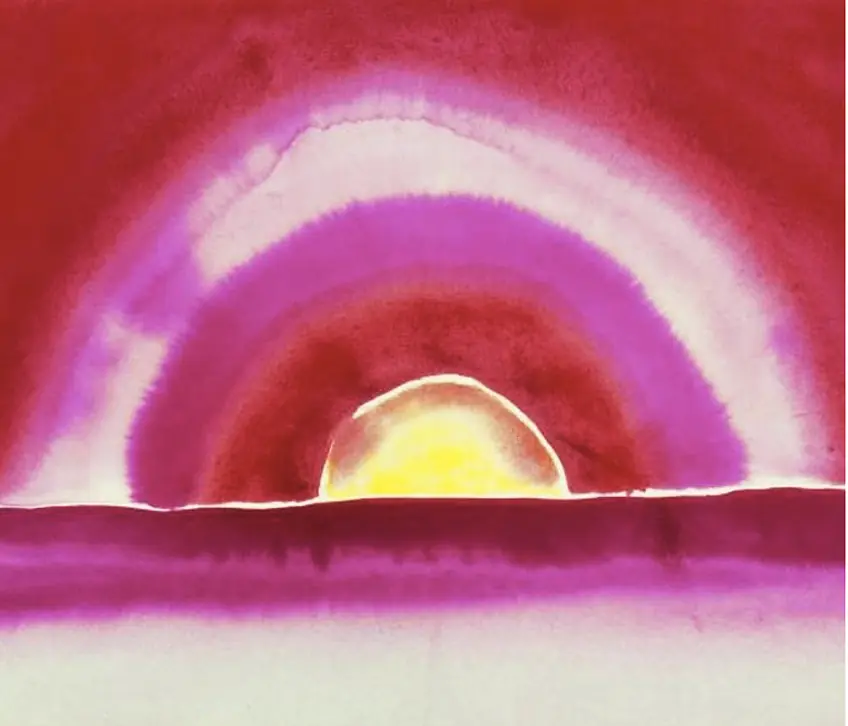
Egon Schiele (1890 – 1918)
| Name | Egon Leo Adolf Ludwig Schiele |
| Date of Birth | 12 June 1890 |
| Date of Death | 31 October 1918 |
| Nationality | Austrian |
| Associated Movements, Themes, and Styles | Expressionism, Vienna Secession, Modern art, portraiture, figurative art, nude art, eroticism, sexuality, love, and self-portraiture |
| Mediums | Watercolor painting, oil painting, and drawing |
| Famous Artworks | ● Self-Portrait with Striped Shirt (1910) ● Self-Portrait (1911) ● Two Little Girls (1911) ● Woman in Black Stockings (1913) |
Egon Schiele was an expert watercolorist and Austrian Expressionist who was most famous for his nude paintings of women and exploration of Modern subjects such as sexuality, eroticism, and the human form. As a member of the Vienna Secessionists, Schiele also sought out artistic guidance from artists such as Gustav Klimt and Wassily Kandinsky who provided the young watercolorist with much inspiration to create his unique spin on figurative painting and self-portraiture.
Despite his short career after his early death brought on by the Spanish flu, Schiele was known for his sinuous approach to figurative painting and his ability to produce a sense of tension and drama in watercolor compositions.
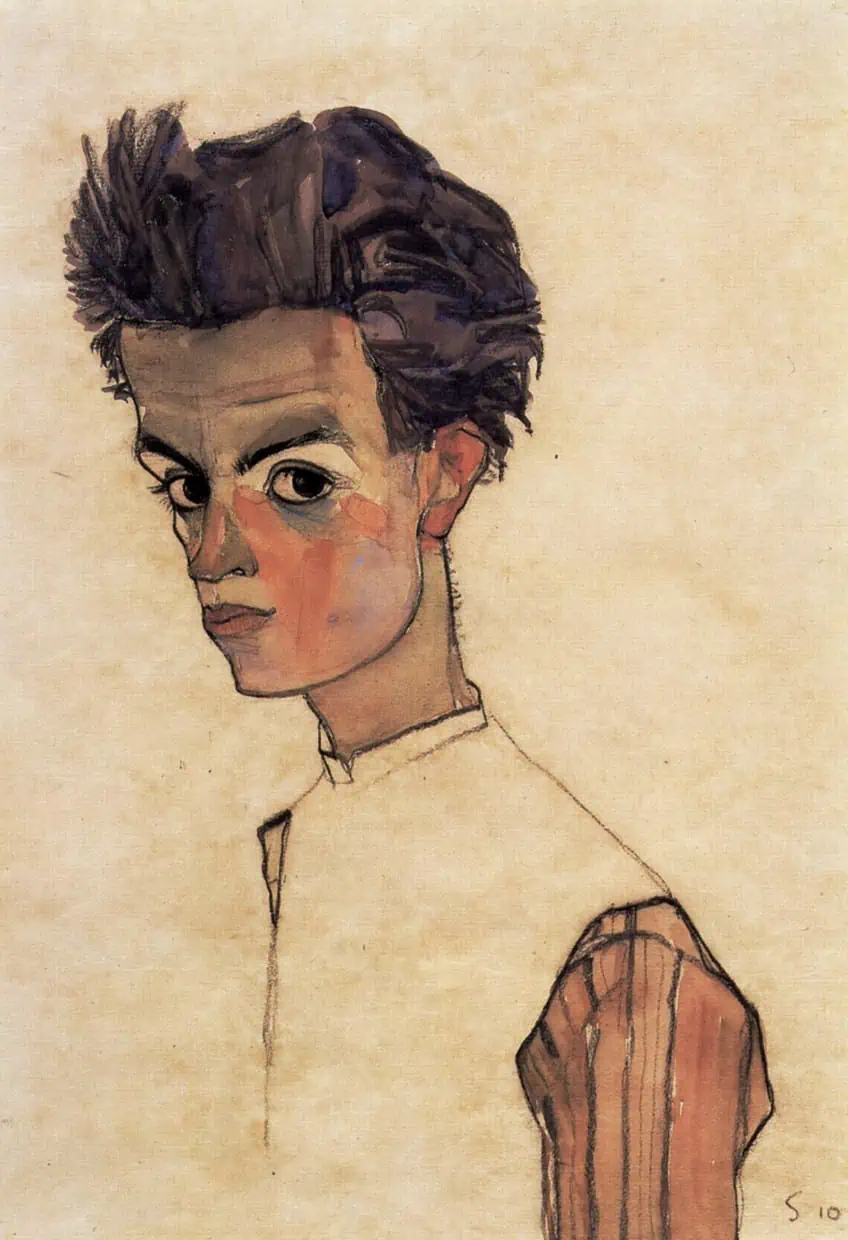
His erotic subject matter was also portrayed with intensity in color and fluid technique in painting that included areas with darker tones for a dramatic atmosphere. Among his most famous watercolor paintings include Self-Portrait (1911) and Woman in Black Stockings (1913).
Anselm Kiefer (1945 – Present)
| Name | Anselm Kiefer |
| Date of Birth | 8 March 1945 |
| Date of Death | Present |
| Nationality | German |
| Associated Movements, Themes, and Styles | Contemporary art, and Modern art |
| Mediums | Watercolor painting, sculpture, and mixed media |
| Famous Artworks | ● Winter Landscape (Winterlandschaft) (1970) ● Innenraum (1982) ● For Segantini: die bösen Mütter (2011 – 2012) ● Les Extases Féminines (2013) ● Aller Tage Abend, aller Abende Tag (2014) |
German watercolorist and mixed media artist Anselm Kiefer is one of the world’s leading watercolor painters and is most famous for his contribution to post-war art and trauma of the 20th century. Although he is mostly associated with sculpture and painting, Kiefer’s subject matter is inspired by memory, history, and mythology.
His style of painting also features layers of colors and textures to portray scenes from the natural environment while integrating symbols and motifs from history.
Today, Kiefer is recognized as one of the most famous watercolor painters of post-war art with many of his watercolor works from the 1970s onwards showcasing earthy and muted colors with layered pigments that highlight the artist’s sculptural inclination. His use of symbols such as sunflowers, trees, and flames alongside spiritual themes and texts also form part of his visual language and has helped establish him as one of the most influential watercolor masters of the 20th century.
Dean Mitchell (1957 – Present)
| Name | Dean Lamont Mitchell |
| Date of Birth | 1957 |
| Date of Death | Present |
| Nationality | American |
| Associated Movements, Themes, and Styles | Modern art, Contemporary art, figurative art, and landscape art |
| Mediums | Watercolor painting, etching, egg tempera, pastel, drawing, and oil painting |
| Famous Artworks | ● Quality Hill, Kansas City (c. 1985) ● Farm House, Havana, Florida (c. 1985) ● Springtime (2000) ● Figures at Shore (2014) ● Festival (2016) ● Fragile French Quarter (2017) |
American watercolor master Dean Mitchell is one of the leading Contemporary watercolor painters of the 21st century whose mastery over the medium has truly shone throughout the last decade. Inspired by the natural landscape, African American culture, and figurative painting, the brilliant watercolorist portrays a variety of subjects and scenes that best exhibit his skills in the medium and the way that he handles color.
The multi-talented painter graduated from the Columbus College of Art & Design and has since become a pioneer of the medium, as well as gaining widespread recognition in numerous publications such as Fine Art International, the New York Times, and American Artist.
Mitchell’s approach to watercolor painting demonstrates his mastery over earthy tones complemented by high contrasts, intimate angles, and cinematic displays of light that accentuate the impact of his compositions. His talent for detailed textures in urban landscapes and architecture is also worth celebrating for their tonal variation and astute approach to mimicking the aesthetic of film photographs.
Liu Yi (1957 – Present)
| Name | Liu Yi |
| Date of Birth | 1957 |
| Date of Death | Present |
| Nationality | Chinese |
| Associated Movements, Themes, and Styles | Figurative art, Contemporary art, portraiture, and landscape art |
| Mediums | Watercolor painting and drawing |
| Famous Artworks | ● Swan Enchantment (2007) ● Holy Music (n.d.) ● Ballet Dancer (n.d.) |
Liu Yi is a famous Contemporary watercolorist from China who is most famous for his watercolor ballet paintings called the Qin Si Series, which was inspired by Russian ballet dancers. Yi is considered to be the most influential watercolor painter in China and stands as the Deputy Director of the Watercolor and Gouache Arts Committee at the Shanghai Artists Association.
Celebrated across the globe, Yi’s paintings will have you enthralled with how he is able to control the medium and create charming portraits of ballet dancers using muted and delicate tones.
Yi also included musical instruments in his works that were inspired by his passion for music and dance and expressed his vision after his interview with the Malinski Ballet actresses. The Chinese artist is also recognized for his fusion of Chinese painting techniques with Western styles to portray other subjects, including landscapes, cityscapes, architecture, and bold-colored portraits. Today, Yi has become the most prolific Chinese Contemporary watercolor painter of the 21st century.
Lourdes Sanchez (1961 – Present)
| Name | Lourdes Sanchez |
| Date of Birth | 1961 |
| Date of Death | Present |
| Nationality | Cuban |
| Associated Movements, Themes, and Styles | Contemporary art, displacement, Abstract art, and botanical art |
| Mediums | Watercolor painting |
| Famous Artworks | ● Cherry #3 (2020) ● Hollyhock, Anemones (2021) ● before we got here #4 (2022) |
Cuban-born watercolorist Lourdes Sanchez is among the most popular Contemporary watercolor painters whose poetic approach to watercolor painting reflects her passion for design, natural motifs, and saturated colors. The Brooklyn-based artist also specializes in oil painting but is admired for her watercolor works, which capture serene moments using a limited color palette.
Her works display an awareness of the softness and delicacy of the medium while presenting dynamic geometric shapes alongside her memories, as found in the titles of her work.
Sanchez is recognized as one of the most well-known abstract watercolor artists of the decade who can elegantly demonstrate the beauty of watercolor through shape and structure. Other famous abstract watercolor artists include Larry Bell and Peter Soriano.
Tracey Emin (1963 – Present)
| Name | Tracey Karima Emin |
| Date of Birth | 3 July 1963 |
| Date of Death | Present |
| Nationality | British |
| Associated Movements, Themes, and Styles | Contemporary art, collage, autobiographical, confessional, figurative art, and portraiture |
| Mediums | Watercolor painting, film, neon text, sculpture, photography, sewn appliqué, drawing, and oil painting |
| Famous Artworks | ● Turkish Woman (1986) ● Untitled (1988) |
Tracey Emin is a famous British sculptor and mixed media artist who is recognized as one of the most influential Contemporary artists in the United Kingdom. Emin’s iconic works explore her interests by documenting herself, her memories, and the body, and are presented in a variety of media, which elevates her concept.
Additionally, she also explores themes such as trauma and sexuality while drawing from her personal experiences and recalling her past through watercolor painting, drawing, installation, and sculpture.
The confessional nature of her work is also accompanied by text and raw brushwork that give her paintings an emotional quality. Her bold use of line also adds a sense of immediacy that captures the intensity of her emotions and emphasizes the personal nature of her work, thus inviting her audience to introspect on her visual language.
Dima Rebus (1988 – Present)
| Name | Dima Rebus |
| Date of Birth | 1988 |
| Date of Death | Present |
| Nationality | Russian |
| Associated Movements, Themes, and Styles | Contemporary art |
| Mediums | Watercolor painting and photography |
| Famous Artworks | ● I’ve Been Out Walking (2013) ● The Selfish Gene (2016) ● The Uncertainty Principle of the Rainwater Collector (2016 – 2021) ● Ministry of Insolation Assistance (2020) |
Dima Rebus is among the most famous emerging Russian Contemporary watercolor artists whose paintings reflect Surrealist and gritty scenes inspired by Contemporary events. Rebus is also an illustrator who created many works for publishing houses and magazines, including a film for National Geographic, Saints & Strangers. Rebus’ style in watercolor painting is defined by his loose brushwork and vivid color choice to depict cityscapes and urban scenes.
Rebus is also admired for his balance of light and shadow while including Contemporary art forms such as street art and graffiti to create an edgy feel in his paintings.
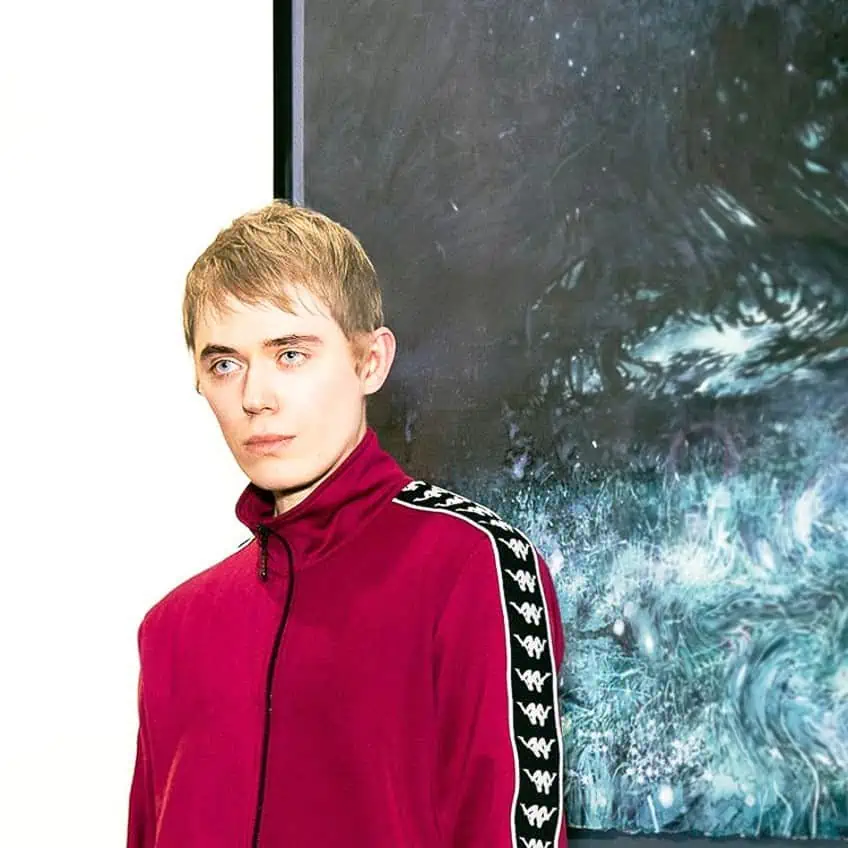
The art of watercolor painting is a significant art form that offers unique visual qualities to experiment with, which would prove difficult to achieve in other art forms. The luminosity and transparency that watercolor painting offers, as well as the ability to manipulate the light and atmospheric quality of a painting through color washing, are just a few effects that can be achieved from practicing with watercolors. The portability and versatility of the medium also make it one of the most convenient mediums through which artists can explore art while traveling, and has been a popular choice for many artists throughout history.
Frequently Asked Questions
What Makes Watercolor Painting So Challenging?
Watercolor painting is considered to be challenging due to its reliance on water, which makes it difficult to maneuver and control as one would in drawing. The medium is also lightly pigmented and is difficult to fix errors once a strong wash has been made.
What Are the Four Elements of Watercolor Painting?
Color, value, shape, and edges make up the four elements of watercolor painting. These elements are also understood as the four pillars of watercolor painting and are the main building blocks to ensure you create a good painting.
What Are the Top Three Tips for Painting in Watercolor?
Among the top three recommendations for painting in watercolor include the use of watercolor pencils to add finer details to the painting and to control the opacity of the pigment since colors are diluted with water and not a white pigment as seen in oil or acrylic painting. Lastly, it is advised that you paint from the lightest hue towards the darkest color to build up the strength of the color and control the tonal variation.
Jordan Anthony is a Cape Town-based film photographer, curator, and arts writer. She holds a Bachelor of Art in Fine Arts from the University of the Witwatersrand, Johannesburg, where she explored themes like healing, identity, dreams, and intuitive creation in her Contemporary art practice. Jordan has collaborated with various local art institutions, including the KZNSA Gallery in Durban, the Turbine Art Fair, and the Wits Art Museum. Her photography focuses on abstract color manipulations, portraiture, candid shots, and urban landscapes. She’s intrigued by philosophy, memory, and esotericism, drawing inspiration from Surrealism, Fluxus, and ancient civilizations, as well as childhood influences and found objects. Jordan is working for artfilemagazine since 2022 and writes blog posts about art history and photography.
Learn more about Jordan Anthony and about us.
Cite this Article
Jordan, Anthony, “Watercolor Artists – A Look at 15 of the Top Watercolor Painters.” artfilemagazine – Your Online Art Source. October 18, 2023. URL: https://artfilemagazine.com/watercolor-artists/
Anthony, J. (2023, 18 October). Watercolor Artists – A Look at 15 of the Top Watercolor Painters. artfilemagazine – Your Online Art Source. https://artfilemagazine.com/watercolor-artists/
Anthony, Jordan. “Watercolor Artists – A Look at 15 of the Top Watercolor Painters.” artfilemagazine – Your Online Art Source, October 18, 2023. https://artfilemagazine.com/watercolor-artists/.


